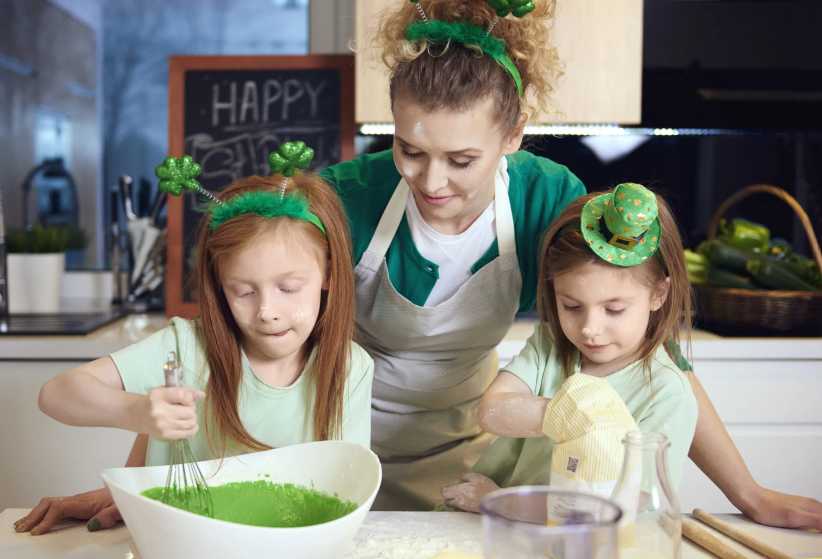“Creativity is a lot like looking at the world through a kaleidoscope. You look at a set of elements, the same ones everyone else sees, but then reassemble those floating bits and pieces into an enticing new possibility.” — Rosabeth Moss Kanter
The ability to see “floating bits and pieces” comes more naturally for some than others, yet parents play a vital role in enhancing their child’s ability to do so.
Nurturing creativity may not only improve your child’s achievement in academics, but as author of “The Creative Family” Amanda Blake Soule explains, it creates deeper connection with family members.
“You’ll make meaningful connections with your children in large and small ways; your children will more often engage in their own creative discoveries; and your family will embrace new ways to relax, play, and grow together.”
Consider these three ideas for nurturing creativity and connecting with your child:
• Model a creative life. Nurturing your own creative spirit will not only improve the quality of your own life, but according to Soule, “It will also serve as a guide and model to your children on finding their creative selves.” Many avenues exist to explore your artistic side, but a good start is an excellent read. Soule recommends “The Starving Artist’s Way” (2004) by Nava Lubelski, which offers 100 “far-out, appealing, and interesting” suggestions. For instance, have you ever made felt from cat hair?
• Prioritize unstructured time. Watching television rarely helps the imagination to bloom. Blogger Tracy O’Connor warns, “Television not only encourages children and adults to be passive consumers of entertainment, but it can also promote materialism and obesity.” Conversely, unstructured time allows children to engage. Dr. Markham says, “Kids need practice with unstructured time, or they will never learn to manage it.” She suggests parents focus on play and process, not productivity.
Unstructured time does not mean boring or unentertaining time. Do make it fun — the process of creating should be joyful, not necessarily the end product. O’Connor says to choose toys promoting creative play, such as LEGO bricks and blocks. These are superior choices to toys that only do one thing.
If kids know where to find materials for creating, they will use them. Have an organized storage system, and teach them how to properly take care of art items. Soule recommends buying quality art supplies such as a few good quality crayons over a box full of hundreds of mediocre ones.
“It’s much more satisfying to work on something when the materials you are using actually ‘work’ and assist in what you are doing, rather than hinder and slow you down.”
Make basic instruments available at home (hand drums, whistles, maracas, harmonicas, recorders, triangles, shakers) so as Soule writes, “They’ll naturally discover and play with them as they do with their toys.”
• Head into the kitchen. There are so many opportunities for creative cooking beyond Tollhouse cookies. Soule recommends “Fairy Tale Feasts” by Jane Yolen (2009), featuring 20 stories, each with at least one recipe (the recipe for “Very French Toast” accompanies the French folktale “Diamonds and Toads”). Another fun option is Georgeanne Brennan’s “Green Eggs and Ham Cookbook” (2006) filled with silly recipes for Cat in the Hat pudding and Moose Juice. (You’ve got to love that the pages of this cookbook are laminated!)
Creativity’s pay-off is huge. If improved academic achievement and deeper connection were not reward enough, all of these nurturing experiences are pure fun!
Michele Ranard has a husband, two sons, and a master’s degree in counseling. She is a creative dynamo who blogs as a hobby at hellolovelystudio.com.
Resources:
Brennan, Georgeanne and Dr. Seuss. “Green Eggs and Ham Cookbook.” Random House Books for Young Readers. 2006.
Lubelski, Nava. “The Starving Artist’s Way: Easy Projects for Low-Budget Living.” New York: Three Rivers Press, 2004.
O’Connor, Tracy. Moneyning. moneyning.com/kids-and-money/10-low-and-no-cost-ways-to-nurture-your-childs-creativity/
Soule, Amanda Blake. “The Creative Family: How to Encourage Imagination and Nurture Family Connections.” Trumpeter, 2008.
Yolen, Jane, Heidi E. Y. Stemple, and Philippe Beha. “Fairy Tale Feasts: A Literary Cookbook for Young Eaters and Readers.” Interlink Pub Group Inc., 2009.






















